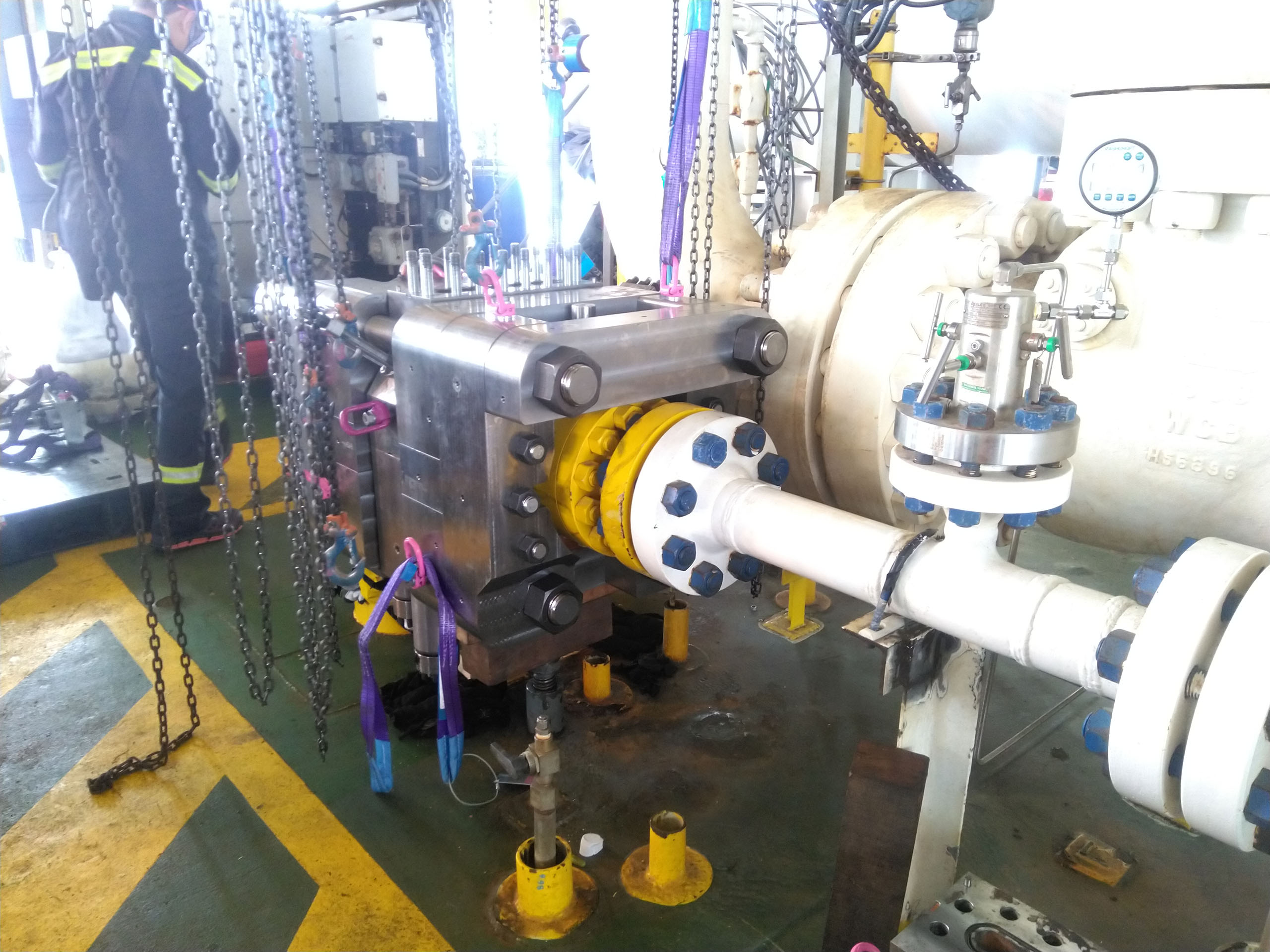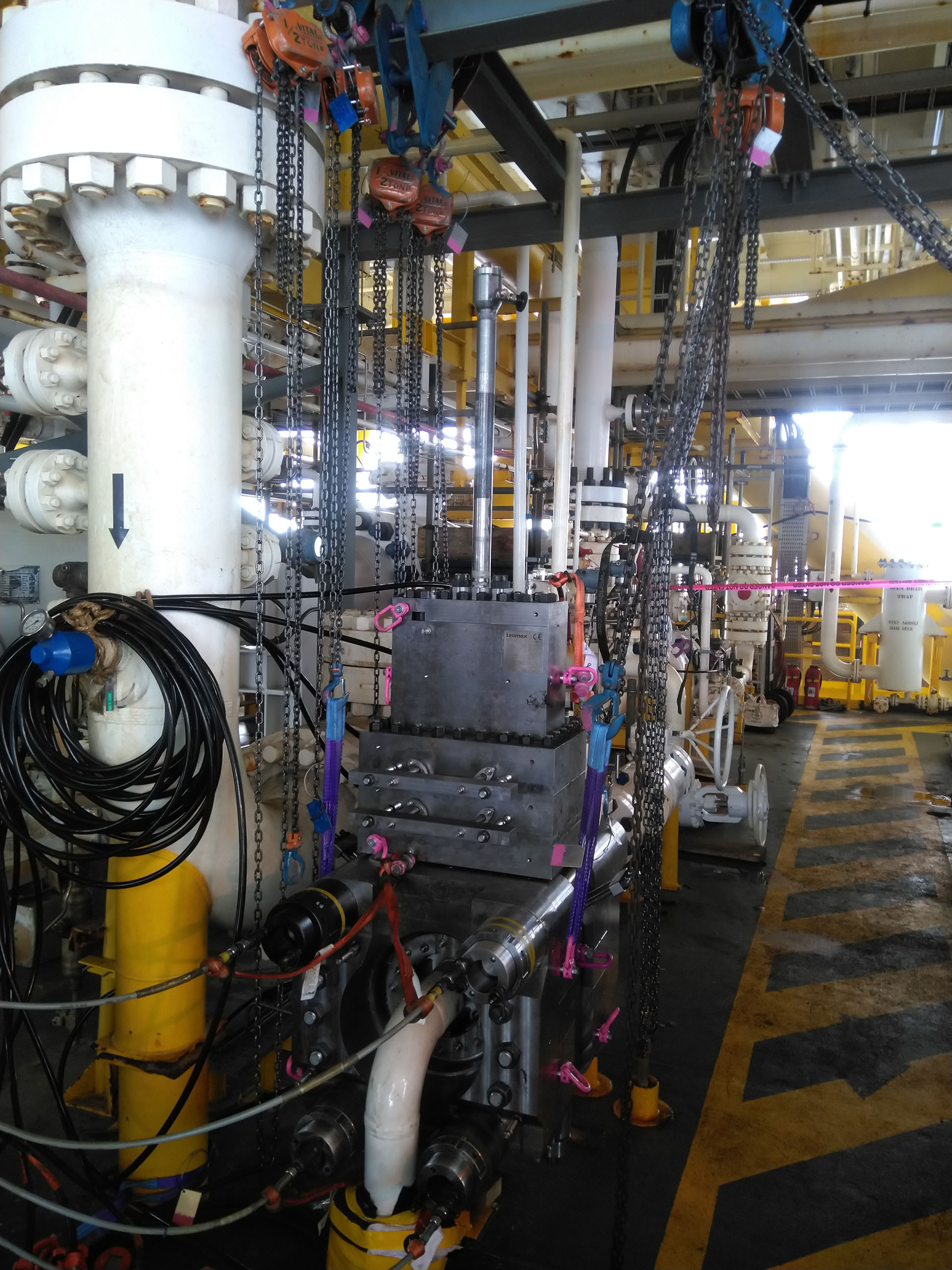

Case Study
Complex Hi-Pressure Gas Line intervention successfully executed with new design 1500 class 4” AOGV avoiding outage and hot work for new customer.
Challenge
A Supermajor with a Gas Production Platform in Thailand was looking at either a full facility shutdown or alternatively, a planned maintenance stop in 2028 as the first viable timeline for tying in a new Gas export line when they reached out to the Izomax team for possible solutions. The client estimated that a 7-9 day outage with the loss of 220 MMSCFD production would be required to rectify the situation using Hot Tapping technology.
A review of the situation with Izomax and the client quickly identified that the AOGV would provide a robust isolation saving both time and cost with a substantial reduction in operational and safety risks. Izomax initiated a fast response feasibility study, prior to agreeing with the client on the timeline to design and build a new class of the 4” AOGV.
During the tool design process, the client noted that the ball valve next to the flanged intervention site was passing and would also need replacing during the isolation and tie-in process. This led to further AOGV design changes in the short timeframe prior to the planned FAT and mock test.
With a live gas system at 125 bar, this safety critical intervention to replace the valve and tie-in a new spool left no room for error. In addition to the technical application complexity, the customer platform was in a country where Izomax had not previously worked, for a new client, with a new design AOGV required within a short deadline.
Technical Snapshot
With no site survey performed, Izomax worked closely with the client and the main platform contractor to confirm accessibility. As seen from the image above, there were space limitations at the rear of the valve and spool junction (between the two capped flanges). Whilst Izomax have several 4 inch AOGV tools as well as a strong track record in deployment, the application called for a 1500 class tool due to the system pressure of 125 bar. With a 4 month window for design, testing, training of the platform contractor staff, and mobilization, a strong project plan with clear roles and milestones was agreed between Izomax and the client. Despite this being the first project for the Supermajor, the client decided that there was no requirement for technology qualification; Izomax’ track record delivering safe and efficient isolations with a range of Supermajors and NOC’s was considered along with the AOGV technology maturity.
Continuous dialogue took place through the design/modification process, which allowed (relatively) late modifications without impacting the tight schedule. The changes were necessary when the client realised a passing valve in-line with the spool take-off point was worsening, so the isolation would encompass a valve replacement in addition to the original tie-in spool scope.
The platform contractor was integral to the planned modifications, and suggested training staff to assist in the AOGV operation to expedite operations and develop their own staff. Izomax saw clear operational benefits to this cooperation, setting up places for platform staff on the next planned AOGV academy training school.
A combined FAT and mock-up test was organized at Izomax facilities, allowing full testing of the new tool in addition to ensure site layout spatial restrictions could be overcome. The FAT process detected small design improvement opportunities which were implemented and tested prior to mobilization.
In line with Izomax standard process for any AOGV isolation, detailed risk assessments were performed throughout the planning process. The Platform contractor and the client were on-site at Izomax’ facility prior to mobilization, ensuring full familiarity with the assembly and disassembly of the AOGV – allowing informed and detailed discussions and preparation prior to job execution. Lifting, operational readiness and access constraints were reviewed and challenges safely mitigated.

The project was executed as per plan, allowing continuous operation while the passing valve was replaced, followed by the tie-in spool. The small gas volumes were nitrogen purged through the AOGV purge port as part of the standard operational phase. The AOGV academy trained personnel from the platform contractor were utilised throughout the operation, making up 50% of the Izomax crew.
The entire project – from inquiry to feasibility, through design, testing, mobilization and execution was completed on-time within 4 months from receipt of the Purchase order. Whilst the original scope called for the tie-in of a new spool for gas export, a passing valve was identified for replacement during the AOGV design process. Minor engineering modifications allowed the same tool to be used to replace the valve, whilst the original scope was performed as planned. The entire operation was safely executed 2 days ahead of plan.